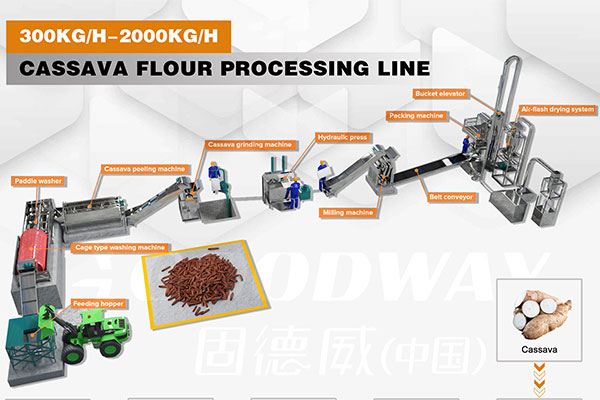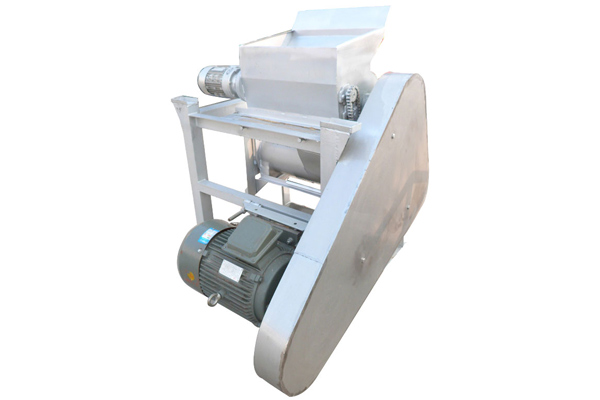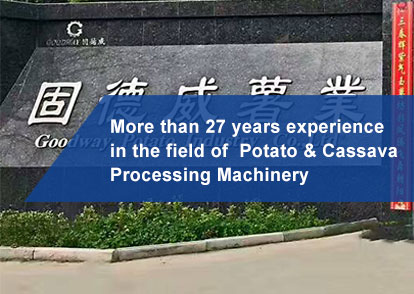How to distinguish the advantages and disadvantages of sweet potato starch is a big problem for ordinary consumers. Based on years of research on sweet potato starch, GOODWAY
sweet potato starch machine Engineering provides you with the following simple methods to help you easily identify the advantages and disadvantages of sweet potato starch:
Method 1: Visual inspection for visually identifying the level of impurities in starch
Intuitive visual effect: sweet potato starch is bright and white, indicating less impurity content, high starch whiteness and good product quality. On the contrary, there are many impurities, low whiteness and poor quality.
Judging method: Take 5-10 grams of sweet potato starch and spread it on a clean glass plate. Use another thick glass to compress the starch into a thin layer and observe if the color of the sweet potato starch is white and there are inclusions. When observing, place the sample on a colorless transparent clean glass plate, lined with white paper, avoid direct light, and use reflected light. The amount of impurities in this way is clearly identifiable.
Method 2: Touch is used to sense the moisture content of starch
Intuitive sensory test: refers to the hand grip, relying on the finger sensory test to test the approximate content of sweet potato starch moisture.
Test method: Knead sweet potato starch with fingers and knead the starch into thin slices. The starch flakes on the fingers were shaken to the table at a height of 20 cm from the table top. If the starch flakes are in the form of loose powder, the starch is relatively dry and the water content is below 15%. If the starch flakes are in small pieces, the water content is between 15% and 20%. If the flakes are not scattered, the water content is above 20%. Hold the sweet potato starch by hand and hold it tightly. The loose hand can explain that the sweet potato starch is relatively dry. After loosening the powder, it is difficult to disperse, indicating that the sweet potato starch contains too much water.
Method 3: Ear hearing is used to determine whether starch contains other starch
Test method: knead the sweet potato starch by hand. If you hear the sound of "creak", or directly knead the sweet potato starch with your fingers, and make a "creak" sound, it means pure sweet potato starch. If the talc powder, wheat flour, and corn flour are mixed in the sweet potato starch, the sound will not be heard or the sound will be slight. This method requires some knowledge of starch discrimination to be feasible.
Method 4: Pile powder to look sharp - this method determines whether starch is adulterated
Judgment method: The sweet potato starch is piled into a cone shape by hand, and the degree of bluntness of the cone tip is seen. Pure sweet potato starch has a low and slow tip, and the mixed sweet potato starch has a high and steep tip. This method is used to misjudge the quality of starch.
Method 5: The taste is used to distinguish the quality of sweet potato starch
Discrimination method: Take a small amount of starch and send it to the mouth. Determine whether the sweet potato starch has odor and impurities by sensory buds and teeth. If the acidity is strong, it indicates that the sweet potato starch is over-fermented when it is processed by the sulphur pulp process, and it is not washed with water or washed thoroughly after the precipitation (washing, the syrup supernatant is removed, and then added with water and stirred to precipitate). Such starch-making bars have a slightly weaker force. If the sweet potato starch has a sour musty taste, it indicates that the sweet potato starch has a long wet period before drying and mildew occurs. This sweet potato starch is easy to break when processing the noodles. If there is talcum powder, wheat noodles, etc., it is mixed with impurities. When chewing with teeth, if there is a feeling of gums, the amount of sediment in the sweet potato starch is more. Sweet potato starch has no peculiar smell, and it is high-quality sweet potato starch if it is chewed without gums.
Method 6: Water sediment is used to distinguish the quality and impurity content of starch
Test method: Take about 50 grams of sweet potato starch and put it in a beaker or transparent glass container. Add 180-200 ml of water and mix well. After stirring for 1 min in one direction, it was allowed to stand for 5 min. Pour out the sweet potato starch milk slowly and pay attention to see if there is any sediment or sand on the bottom. The sweet potato starch milk was then precipitated in a colorless transparent glass or beaker for 3 hours to observe the precipitation. If the precipitation is fast, the starch sinks neatly, the upper layer is clear, and the bottom layer is free of fine sand, which is high quality sweet potato starch. If the precipitation is slow, the upper layer of water is yellower and the sand is more, it is a low quality powder. If corn flour, wheat flour, etc. are added, the precipitation is not obvious, and the upper layer is turbid.
The above methods are for reference only and we hope to provide some help in the quality discrimination of starch.

 EN
EN
 fr
fr  es
es  it
it  pt
pt 







